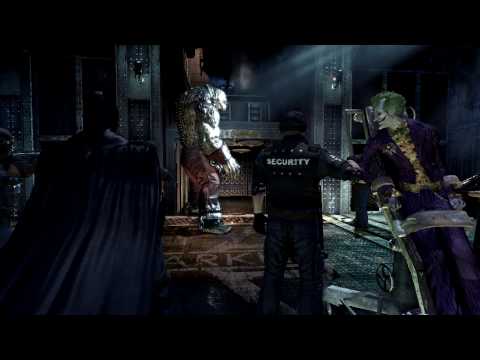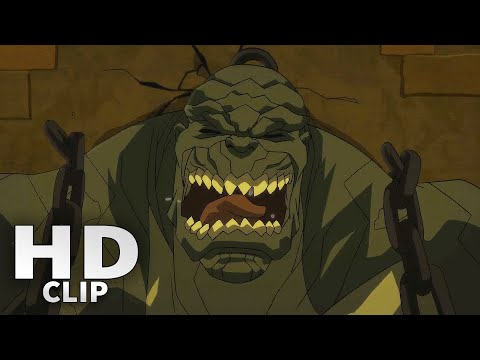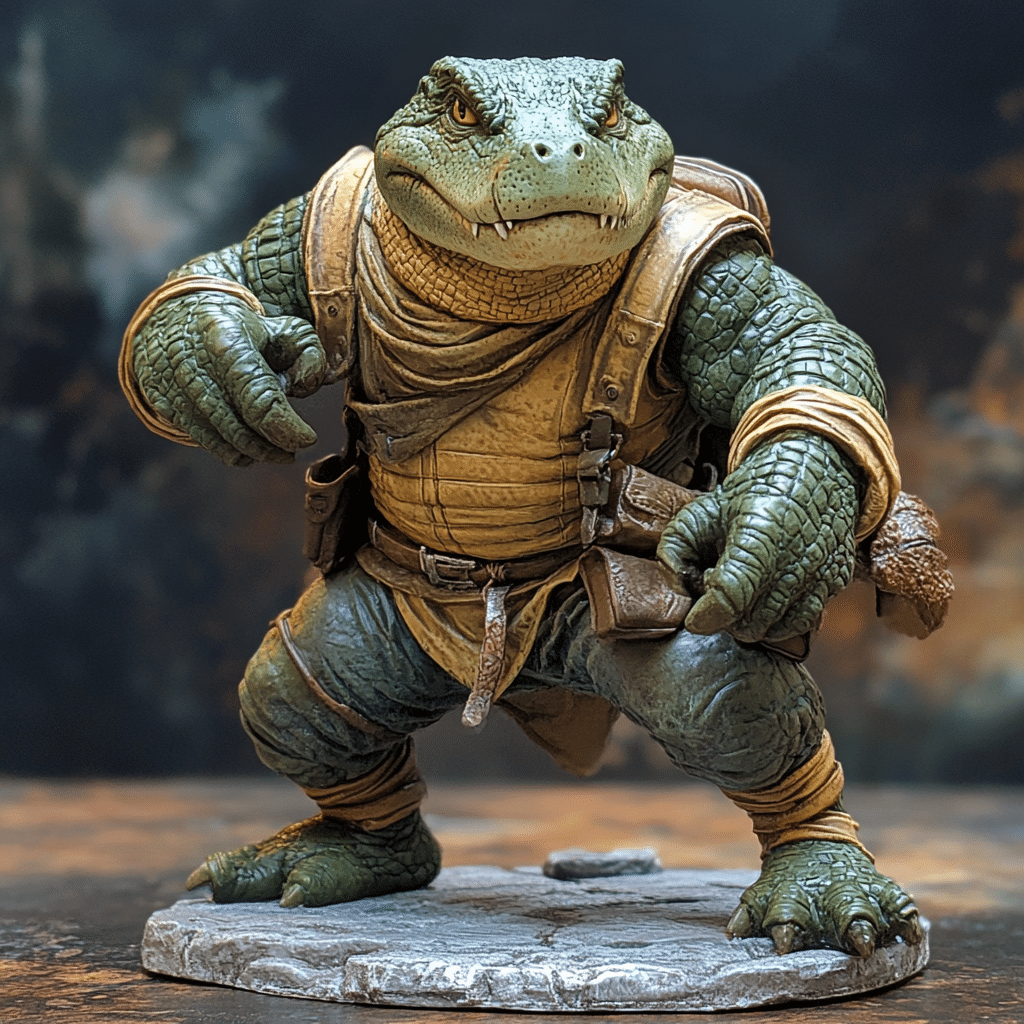
Killer Croc The Beastly Antihero Of Gotham
Killer Croc, or Waylon Jones if you’re feeling formal, is one of Gotham’s most notorious figures. This beastly antihero doesn’t just blend into the background of Batman’s rogues’ gallery; he leaps out of it in a monstrous way. His haunting origins, complex morality, and captivating design make him a standout character among Gotham’s villains. In this article, we’ll dive into seven compelling reasons why Killer Croc holds such a unique position in the dark world of Gotham, making him resonate with fans just as Mihawk from One Piece captivates his audience.
7 Reasons Why Killer Croc Stands Out Among Gotham’s Villains
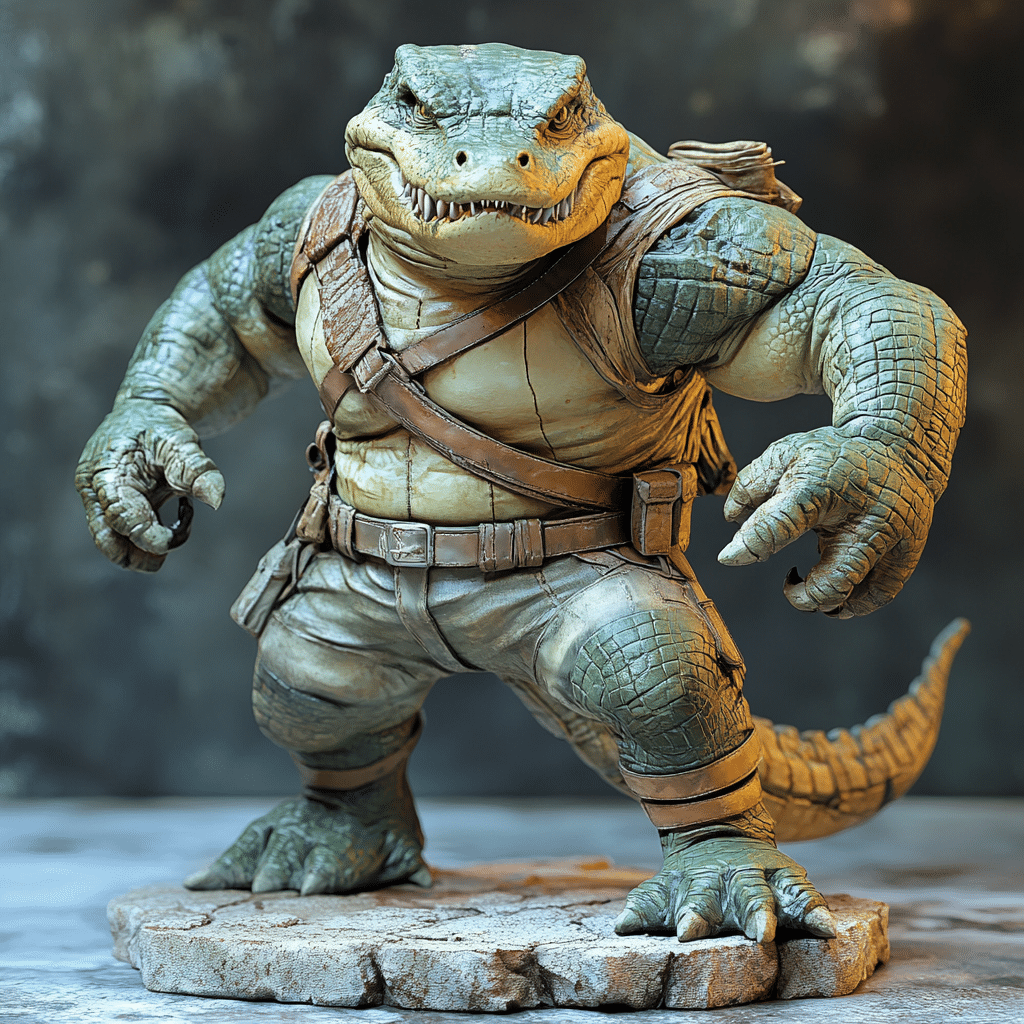
1. A Complex Origin Story
Killer Croc’s beginnings are anything but simple. Born with a severe form of epidermolytic hyperkeratosis, Croc’s skin evolved to look distinctly reptilian, transforming him into a living embodiment of monstrosity. Raised by an alcoholic aunt who shunned him for his appearance and behavior, he learned from an early age that society viewed him as an outcast. His tragic backstory mirrors that of misunderstood figures like Mihawk from One Piece, who also faces societal expectations and biases. This compelling origin allows audiences to witness a relatable struggle between a man’s humanity and the monstrous identity forced upon him.
Killer Croc’s debut in Batman #357 reveals more than just a menacing figure; it lays the groundwork for a character who fights against the labels placed on him. He embodies the tension of trying to reconcile his human side with the beast lurking within. This struggle makes him a more sympathetic character, urging fans to reconsider what it truly means to be a villain in a city filled with marginalized and broken souls.
2. The Antihero Paradox
Unlike standard villains reveling in chaos, Killer Croc walks a moral tightrope that muddies the waters of heroism and villainy. Much like Sentry from Marvel, whose complexities often lead him down dark paths, Croc sometimes makes choices that can shock us but are rooted in survival. His brutal actions often arise from a desire to protect those he cares for, showcasing a shocking duality; beneath the scales lies a heart that sometimes wants to do good.
Consider how Croc defends others in the criminal underbelly of Gotham—his motivations are often driven by a protective instinct, not solely the desire to harm. This complexity allows audiences to connect on a deeper level, engaging with a character who reflects the messy gray areas of morality. It propels him beyond mere villainy, positioning him closer to the antihero status shared by impacted characters in other universes.
3. The Black Monster of Terror
Killer Croc epitomizes the concept of the “black monster terror.” His appearance symbolizes the public’s fear of those who don’t conform to societal standards. Croc forces us to confront our own biases and the stigma surrounding mental health. Just as society often demonizes individuals who diverge from the norm, Croc highlights how easily fear can turn empathy into revulsion.
His metamorphosis into a cannibal, especially after hunting down those who wronged him, opens dialogues surrounding violence and survival. It embodies the internal struggle many face, and thus positions Croc as an unusual yet stark representation of societal fears and acceptance. Ket’s not mistake; the monstrous appearance of Killer Croc can evoke terror, yet his backstory invites empathy, blurring the lines between villaincy and victimhood.
4. Iconography and Cultural Influence
Killer Croc’s design is striking, marked by his scaly skin and formidable size. He’s become emblematic of disturbed grandeur within the DC Universe. His visual representation resonates with themes prevalent in pop culture, much like the iconic Titan TV Man. With each appearance, be it in comics, animated series, or video games, Croc’s design influences the aesthetic of the medium itself, solidifying him as a cultural touchstone.
From games like Batman: Arkham Asylum, where he’s voiced by talented voice actor Steven Jay Blum, to portrayals across various adaptations, his image evokes immediate recognition. It’s similar to how Johnny Silverhand’s character has permeated the gaming community in Cyberpunk 2077, creating a cultural blend where design meets storytelling. Through Croc, audiences absorb more than just fear; they encounter a complex icon whose image carries weight across the spectrum of media.
5. Symbiotic Relationships with Other Characters
The relationships Killer Croc forges with characters like Harley Quinn and Poison Ivy breathe life into his character, revealing the intricate dynamics within Gotham’s villainous circles. His ties to the Legion of Doom in shows like Harley Quinn and his camaraderie with other misfits demonstrate an emotional complexity often overlooked. Much like the fragile yet intricate relationships between characters from the A Court of Thorns and Roses (ACOTAR) series, Croc’s interactions show the humanity underlying brutality.
These alliances help shape his identity, offering glimpses into moments of vulnerability that contrast sharply against his beastly demeanor. Situations that reveal his need for companionship underscore a relatable and emotional side that resonates with audiences. They create layers that elevate Croc into a more profound character, ultimately challenging the idea that villains lack the need for connection and community.
6. Cultural Commentary Through a Monster’s Lens
Killer Croc serves as a mirror reflecting society’s treatment of marginalized individuals, much like certain storytelling frames use sports—Top Gun’s depiction of camaraderie through baseball showcases bonds formed in adversity. Croc’s experiences are emblematic of those who face constant rejection, forcing society to thoughtfully engage with crucial themes of acceptance and identity.
His journey invites viewers to question their perceptions of monstrous behavior and the true essence of humanity. By embodying the rejection experienced by many, Croc’s tale becomes a critique of societal norms. Conversations surrounding inclusion and acceptance find new meanings when viewed through the lens of a monster.
7. Evolution Across Media
The evolution of Killer Croc’s portrayal demonstrates the ongoing transformation within the superhero genre. As characters transition from comic pages to dynamic portrayals in films and television, each representation adds new layers to Croc’s persona. Similar to the iterations seen in One Piece and Top Gun, where characters develop and adapt within their narratives, Croc’s evolution reflects changing expectations in storytelling.
Each adaptation reveals different facets of his character and engages the audience on varied emotional levels. As content creators seek to depict more complex character journeys, Killer Croc remains an essential figure, bridging the gap between traditional villainy and modern antiheroism. His continued reinvention shows how storytelling can embark on a path toward rich character development, reflecting both human nature and societal change.
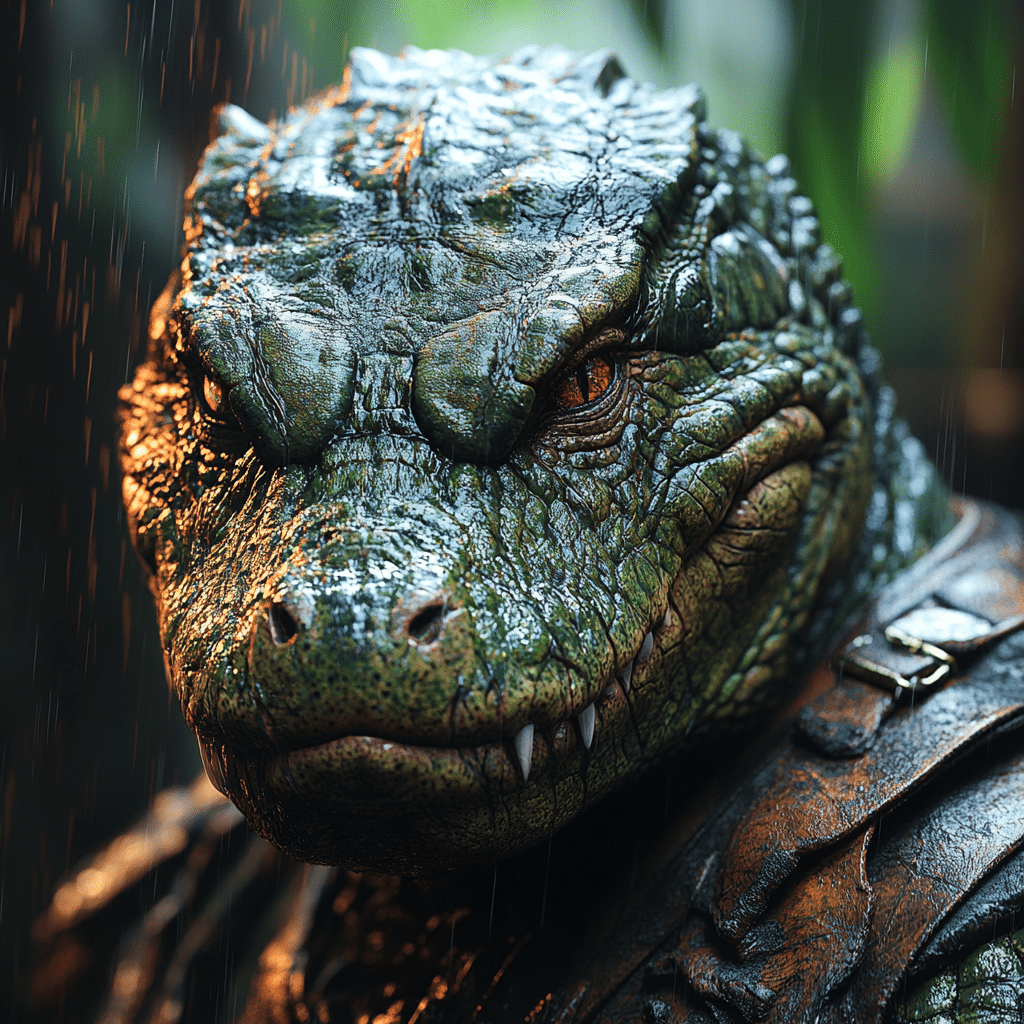
Navigating the Waters of Morality
Killer Croc embodies the struggle between primal instincts and noble aspirations. Through his dark journey, he embodies the larger human experience of navigating acceptance in a world that often fears the unknown. As he transforms from villain to antihero, Croc serves as a reminder of life’s inherent complexities.
In a landscape filled with clear-cut heroes and villains, Killer Croc defies simple classification. His character resonates with audiences who increasingly gravitate towards narratives that explore moral ambivalence. As we delve deeper into those gray areas, the legacy of Killer Croc in Gotham is set to grow, paralleling significant transformations in both indie and mainstream storytelling.
In conclusion, Killer Croc’s multifaceted nature and complex relationships create a lasting impact within Gotham’s narrative. Just as society grapples with its biases and perceptions, Killer Croc embodies those struggles, making him more than just a villain; he’s an antihero with a story worth sharing and exploring.
Killer Croc: The Beastly Antihero of Gotham
Origins and Evolution
Killer Croc, born Waylon Jones, first slithered onto comic pages in the 1980s, created by the legendary Paul Giacoppo and writer Gerry Conway. With a backstory influenced by a rare genetic condition that gives him reptilian features, Croc stands apart from other Gotham foes. His character development reflects society’s often hidden prejudices, emphasizing how people can forget the humanity behind even the most savage exterior. Just like how the cast of Super Troopers brought humor into their roles, Croc’s blend of menace and redemption offers an intriguing twist on the typical villain narrative.
Film Appearances and Cultural Impact
Killer Croc’s cinematic presence varies from brief moments to major roles, most notably in the divisive 2016 film “Suicide Squad.” His portrayal, while some viewed as a unique interpretation, garnered mixed reactions from fans entrenched in comic lore. On a fun note, the performance has occasionally been compared to other iconic characters like Rangiku from various anime series, proving the diversity in character design and storytelling in both mediums. There’s just something enthralling about a character who’s capable of both destruction and empathy!
Fun Facts and Trivia
Did you know that Killer Croc’s name isn’t the only legendary reference out there? His character resonates with themes of survival, paralleling discussions about veteran housing assistance that focus on providing refuge and support for those who’ve fought through life’s battles. Additionally, his persona has sparked comparisons with the rabid energy of the Fellowship of the Ring cast, who embraced their own heroic journeys. In the end, Killer Croc reminds us that every antihero can spark curiosities akin to checking out daily mortgage rates for a new home or discovering the latest on Maggie Gyllenhaal movies and TV shows. Whether feared or misunderstood, his story is a layered one that highlights the ongoing complexities of identity and acceptance—truly a riveting aspect for fans of the DC universe!
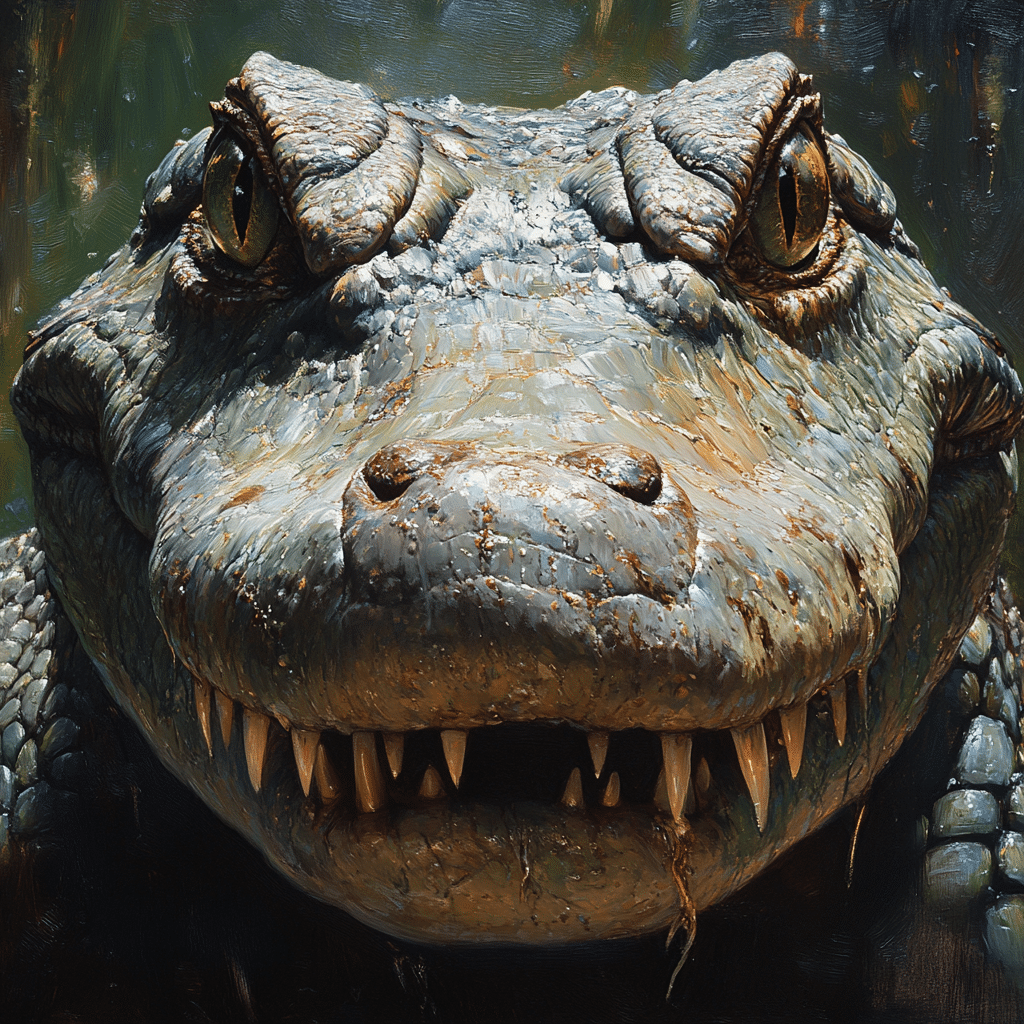
How did Killer Croc turn into Killer Croc?
Waylon Jones turned into Killer Croc due to a rare genetic condition called epidermolytic hyperkeratosis, which caused his skin to take on a reptilian appearance and made him more animalistic over time.
Did Killer Croc used to be human?
Yep, Killer Croc did used to be human. He was born as Waylon Jones but his condition radically changed his appearance, making him more beast than man in the end.
Can Killer Croc speak?
Killer Croc can speak, though his speech may be a bit rough around the edges. He’s got a smug attitude and knows how to use his words to intimidate others.
Is Killer Croc a cannibal?
Yes, Killer Croc is considered a cannibal. His violent instincts took over at one point, leading him to hunt and eat those he deemed worthy prey.
What is Killer Croc’s weakness?
Killer Croc’s weakness varies, but he can be vulnerable to fire and certain forms of psychological manipulation, like fear or distraction.
How is Killer Croc so strong?
His strength comes from his massive size and muscle mass, developed over years of living in tough conditions which made him tougher and more resilient than most.
Is Killer Croc bulletproof?
Killer Croc isn’t bulletproof, but his thick skin does offer some protection against physical attacks. However, he can definitely be injured by bullets or other weaponry.
Who is stronger, King Shark or Killer Croc?
When it comes to strength, opinions are mixed, but many think King Shark has the edge over Killer Croc, thanks to his massive strength and aquatic nature.
How did Killer Croc get so big?
Killer Croc got so big because of his unique genetic condition and his life experiences, which pushed his body to adapt and grow larger and more monstrous over time.
What does Killer Croc want?
Killer Croc primarily wants acceptance and power. He’s often driven by survival instincts and the need to prove himself to others, especially in the criminal world.
Who is stronger Hulk or Killer Croc?
In battles, Hulk is typically seen as stronger than Killer Croc, given Hulk’s limitless strength when he’s angry, making him a tough opponent for anyone.
Who is Killer Croc’s girlfriend?
Killer Croc’s girlfriend is the Enchantress, and their relationship blossoms when they team up in the Suicide Squad.
Why is Killer Croc grey?
Killer Croc is grey because of his skin condition, which gives him an unusual, reptilian hue that’s different from normal human skin tones.
Why did Killer Croc grow a tail?
He grew a tail over time as his appearance became more inhuman. This development aligns with his transformation into a more animalistic creature.
What is Killer Croc’s real name?
Killer Croc’s real name is Waylon Jones, and that’s the name he was born with before he turned into the feared villain we know today.





